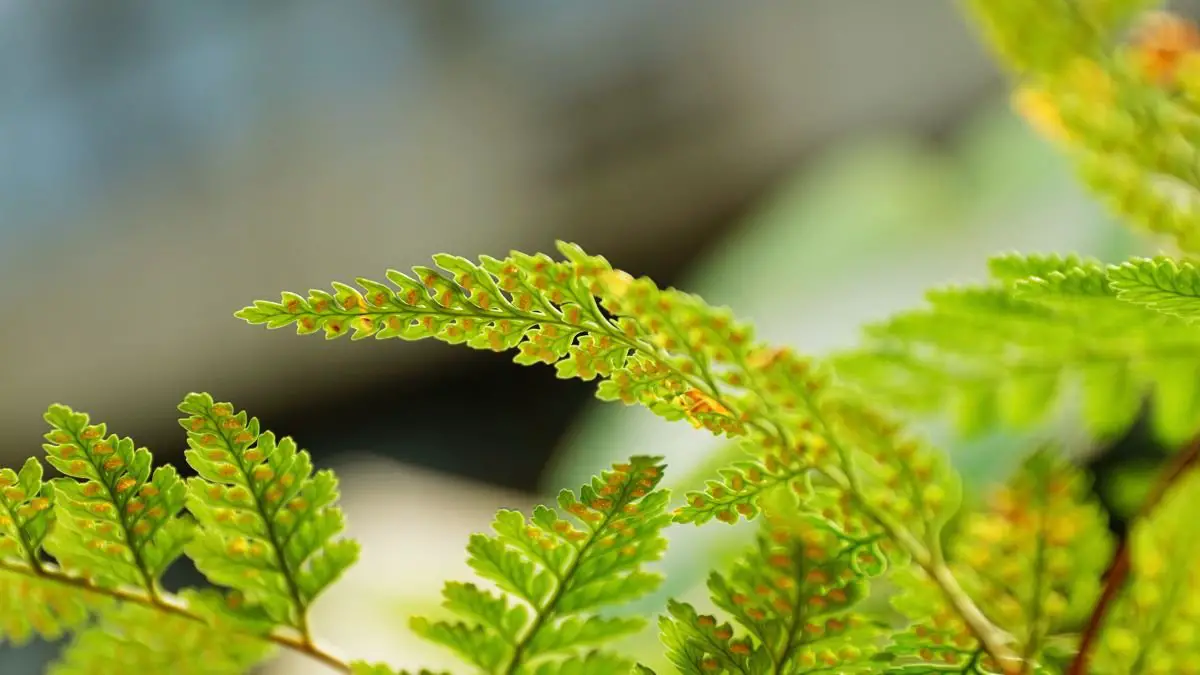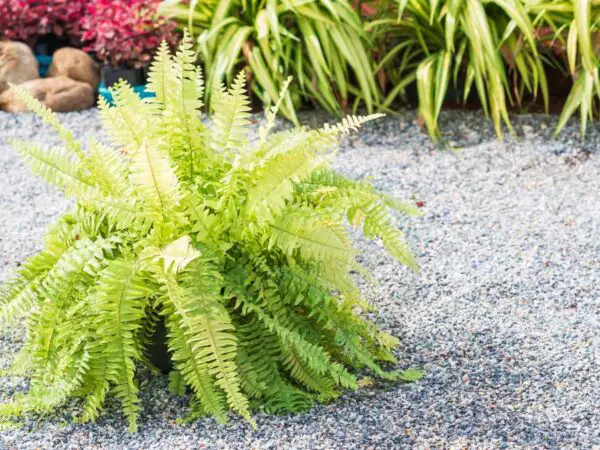Rabbit's foot ferns, with furry rhizomes, are charming houseplants that require specific care including potting mix to thrive. If you're wondering how to care for Rabbit's Foot Fern, houseplants with furry rhizomes, worry not! With the right knowledge and attention, you can ensure your fern stays healthy and vibrant.
Rabbit's Foot Ferns (Davallia fejeensis), a species of houseplants, thrive in indirect light, moderate humidity, and well-draining soil. Keep their soil consistently moist but not waterlogged, allowing the top inch to dry between waterings. Maintain a temperature range between 60-75°F (15-24°C) and fertilize lightly during the growing season to promote healthy roots of plants. Prune any damaged fronds, repot plants annually to refresh the soil, and provide ample space for roots growth. Protect plants from drafts and avoid placing roots near heating or cooling vents. With proper care, your Rabbit's Foot Fern will grace your home with its lush foliage and unique furry rhizomes for years to come.
Interested in more tips to nurture your indoor garden? Explore our comprehensive guides on houseplant care to unlock the secrets to cultivating a thriving indoor oasis.
Key Takeaways
- Regularly fertilize your rabbit's foot fern to promote growth and maintain its health. Choose a balanced liquid fertilizer and apply it according to the instructions.
- Prune your fern to remove dead or yellowing fronds and maintain its desired shape. Regular pruning encourages new growth and keeps the plant looking vibrant.
- Use propagation techniques like division or spore propagation to create new plants from your existing rabbit's foot fern. This allows you to expand your collection or share with others.
- Select a well-draining potting mix and a container with drainage holes to ensure proper moisture levels for your fern. Repot as needed to prevent root bound issues.
- When overwintering your rabbit's foot fern, reduce watering frequency and protect it from cold drafts. Maintain a consistent temperature and humidity level to help the plant thrive during winter.
- Prevent pests like spider mites and scale insects by regularly inspecting your fern and treating any infestations promptly. Neem oil or insecticidal soap can be effective natural remedies.
Essential Care Guide
Light Requirements
Rabbit’s foot ferns thrive in bright, indirect light to support photosynthesis. Avoid direct sunlight to prevent leaf burn. Adequate light is crucial for the plant's healthy growth.
Soil Preferences
To prevent root rot, choose well-draining soil for your rabbit’s foot fern. A mix of peat moss, perlite, and pine bark ensures optimal growth. Maintain a soil pH between 5.5 to 6.5 for the fern's health.
Watering Needs
Maintain consistent moisture in the soil without overwatering to prevent root issues. Allow the top layer of soil to dry slightly between waterings. Drain excess water from the pot promptly to avoid root rot.
Temperature Levels
For ideal growth, keep temperatures between 65 °F to 75 °F consistently. Avoid sudden temperature changes that can stress the plant. Shield the fern from drafts and direct heat sources for its well-being.
Humidity Levels
Boost humidity levels through misting or using a humidifier to mimic the fern's natural habitat conditions. Ensure that indoor humidity is higher than average levels to promote healthy growth. Prevent dry air by maintaining adequate humidity levels for a thriving rabbit’s foot fern.
Fertilization Practices
Fertilizer Types
When fertilizing your Rabbit's Foot Fern, opt for a half-strength water-soluble fertilizer to feed the plant effectively. Choose a balanced fertilizer that provides essential nutrients for healthy growth. For lush foliage, select a fertilizer with a higher nitrogen content.
Application Frequency
To ensure optimal growth, fertilize your Rabbit's Foot Fern every three weeks during the active growing season. However, it's crucial to skip fertilization in the winter months when the plant is dormant. Consistent application of fertilizer is key to achieving the best results.
Pruning and Maintenance
Pruning Steps
Trim yellow or damaged fronds to maintain plant health. Remove dead or browning rhizomes to encourage new growth. Prune sparingly to avoid stressing the plant.
Maintenance Tips
Regularly check for pests and diseases. Monitor soil moisture levels to prevent overwatering. Keep an eye on leaf color for signs of nutrient deficiencies.
Propagation Techniques
Division Method
When propagating a Rabbit's Foot Fern, the division method is commonly used. Divide the plant while repotting to create new plants. Ensure to separate healthy rhizomes that come with roots attached. Carefully divide the plant to guarantee that each section has an adequate amount of roots for successful growth.
Spore Propagation
Another effective propagation technique for a Rabbit's Foot Fern is spore propagation. To start, collect spores from mature fronds on the plant. Next, sow these spores onto a moist and sterile medium to initiate germination. Maintain consistent moisture levels and warmth to facilitate the growth of spores into new ferns.
Potting Essentials
Choosing Pots
When potting your rabbit's foot fern, make sure to select a pot with drainage holes. This is crucial to prevent waterlogging, which can lead to root rot. Opt for a shallow container when choosing a pot. Shallow pots are ideal for accommodating the fern's rhizomes, promoting healthy growth. It's recommended to choose a pot that is slightly larger than the root ball. This extra space allows room for the plant to expand and thrive.
Repotting Time
Repot your rabbit's foot fern every 2-3 years to maintain its health and vitality. This practice helps refresh the soil, providing essential nutrients for optimal growth. Another indicator that it's time to repot is when the plant outgrows its current container. Keep an eye on the roots as well – if they appear crowded or start growing out of the drainage holes, it's definitely time for a new home. Regular repotting ensures that your fern continues to flourish and remain healthy.
Overwintering Strategies
Temperature Adjustments
Rabbits foot ferns require specific temperature adjustments to thrive during winter. Indoor temperatures should be adjusted accordingly to meet the plant's needs. Avoid exposing the fern to cold drafts that can harm its delicate foliage. Consistent temperatures are crucial to prevent stress on the plant.
Rotate your rabbits foot fern regularly to ensure it receives even exposure to light. Shield the plant from direct sunlight, as it can cause damage to its leaves. Depending on seasonal changes, adjust the position of your fern to optimize light intake.
Pest Prevention
Identifying Pests
Rabbit foot ferns are prone to pests such as spider mites, scale insects, and aphids. To identify these pests, inspect the undersides of leaves for spider mites' webbing. Check fronds and rhizomes for scale insects that resemble small bumps. Keep an eye on new growth areas for clusters of aphids.
Natural Remedies
Combat spider mites with neem oil, a natural pesticide that effectively eliminates them without harming the plant. For scale insect control, create a mixture of water and dish soap to suffocate and remove these pests from your fern. Introducing ladybugs into your indoor garden can act as a natural predator to tackle aphid infestations effectively.
Disease Management
Common Diseases
Rabbits foot ferns are susceptible to root rot from excessive watering, leading to wilting and yellowing leaves. Fungal infections thrive in damp conditions, causing brown spots on the foliage. Keep an eye out for leaf spots caused by bacterial pathogens, appearing as dark lesions on the leaves.
Treatment Options
To address root rot, adjust your watering routine by allowing the soil to dry slightly between waterings. Enhance air circulation around the plant by placing it in a well-ventilated area. If fungal diseases persist, trim affected leaves and apply fungicides as needed.
Troubleshooting Tips
Scorched Fronds
Trim scorched fronds to stimulate new growth. Move the plant away from direct sunlight to prevent further damage. Adjust light exposure for future prevention.
Discolored Fronds
Check for nutrient deficiencies causing discoloration. Modify fertilization to address yellowing or browning leaves. Monitor light levels to prevent color loss in fronds.
Final Remarks
You now possess a comprehensive understanding of how to care for your rabbit's foot fern. By following the essential care guide, fertilization practices, pruning techniques, and propagation tips outlined here, you can ensure your plant thrives. Remember to pot it correctly, implement effective overwintering strategies, and stay vigilant against pests and diseases. With these insights, you are well-equipped to troubleshoot any issues that may arise.
Take action today by applying these recommendations to nurture your rabbit's foot fern to its fullest potential. Share this knowledge with fellow plant enthusiasts to help them care for their ferns too. Your efforts will not only benefit your plants but also contribute to a greener and healthier environment.
Frequently Asked Questions
How often should I fertilize my rabbit's foot fern?
Fertilize your rabbit's foot fern every 2-3 months during the growing season. Use a balanced liquid fertilizer diluted to half strength to avoid over-fertilizing, which can harm the plant.
Can I propagate my rabbit's foot fern in water?
Yes, you can propagate your rabbit's foot fern in water. Simply place the cuttings in a jar of water until roots form, then transfer them to soil for continued growth.
When should I repot my rabbit's foot fern?
Repot your rabbit's foot fern when you notice the roots becoming root-bound or outgrowing the current pot. This is typically needed every 1-2 years, preferably in spring.
How do I prevent pests from infesting my rabbit's foot fern?
To prevent pests like spider mites and aphids, regularly inspect your plant for any signs of infestation. Keep the foliage clean by wiping it with a damp cloth and ensure good air circulation around the plant.
What are common diseases that affect rabbit's foot ferns?
Rabbit's foot ferns are susceptible to root rot if overwatered. Ensure proper drainage and avoid letting the plant sit in water. Watch out for fungal issues like leaf spot and treat promptly with appropriate fungicides if needed.
Image Source: Paid image from CANVA





